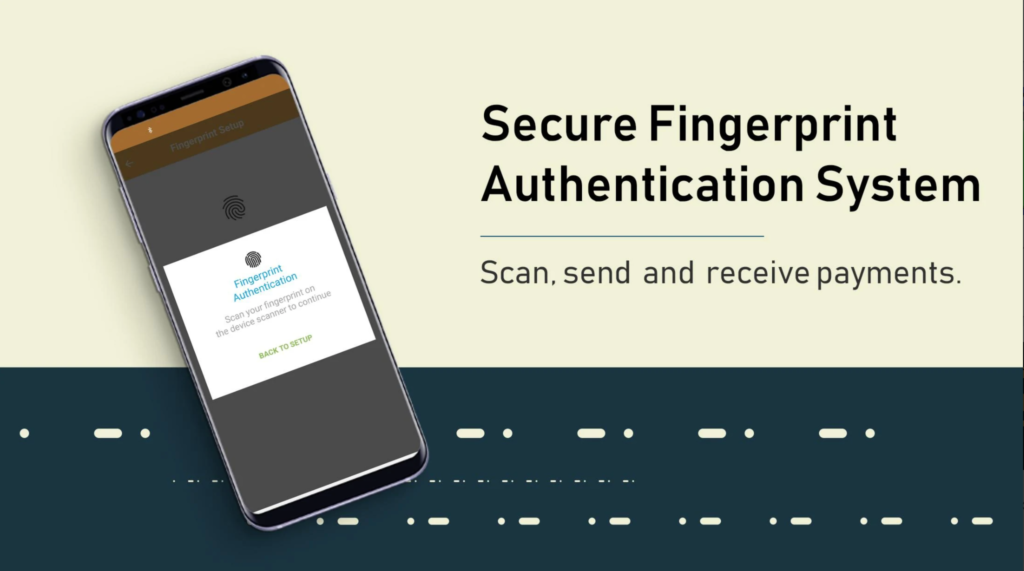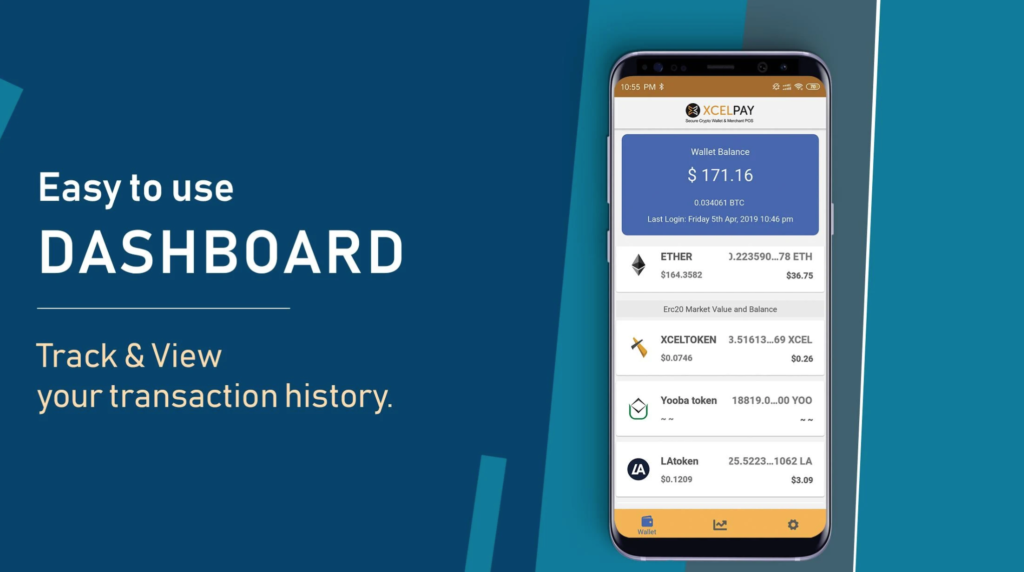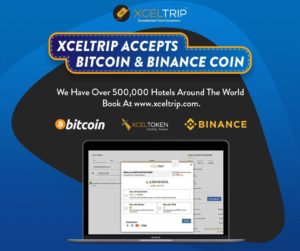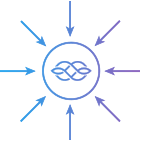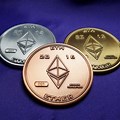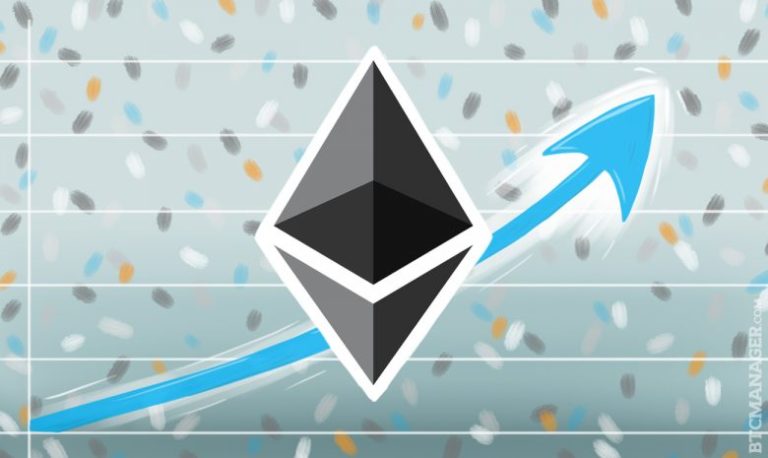 Abstract
Abstract
IAGON is the first decentralized Artificial Intelligence Blockchain-enabled Supercomputing Grid Technology for harnessing the storage capacities and processing power of multiple smart devices over a decentralized Blockchain/Tangle grid. The platform creates an AI decentralized architecture that manages and optimizes spare/idle distributed computing power and storage around the world, creating a truly decentralized Global Smart Computing Network solution for web-centric and decentralized applications. Utilizing a new consensus mechanism known as Proof-of Utilitarian (PoUW), it promotes decentralized cloud services, where multiple grid miners are rewarded by conducting decentralized parallel computing tasks and storing user’s files. IAGON represents a new wave of High Performance Computing powered by Artificial Intelligence, Blockchain, BigData and wrapped in a sophisticated Encryption/Decryption philosophy catering for both individual and corporate clients.
About IAGON
IAGON is Global Supercomputing powered by Artificial Intelligence, BigData and Blockchain Technology that harnesses the storage capacities and processing power of multiple smart devices over a decentralized network Blockchain/Tangle grid. It’s design philosophy is simple in that enables storing of BigData and repositories, as well as smaller scales of files, and carries out complex computational processes through a smart computation grid such as those needed for Artificial Intelligence and Machine Learning operations. IAGON operates a fully secure and encrypted platform that integrates Multiple Blockchain Support/Tangle Technologies, AI-Based Computational Processing, Smart Computational Grid and Secure Lake Technologies in an intuitive and user-friendly environment.
Under IAGON’s platform you can imagine a world where anyone can profit by joining a massive processing grid. IAGON will provide a fully automated platform for carrying out the storage and processing tasks of users on the basis of unutilized storage and processing capacities that are contributed by participating nodes or “miners”. The decentralized cloud platform using the Smart Computational Grid will operate both storage and a processing functionality. Both functions operate on a Blockchain powered by Machine Learning capabilities to optimize the allocation of tasks and files to mine. Because of IAGON’s architecture it’s token economy is well positioned to enables miners that have earned tokens to easily convert the tokens to fiat money, to accumulate them or to pay for similar services.
Iagon’s Mission
IAGON’s mission is to revolutionize the cloud and web services market by offering a decentralized grid of storage and high performance processing. By joining the unused storage capacity in servers and personal computers and their processing power, a supercomputer and super data centre that can compete with any of the current cloud computing powers.
The platform aims to provide to both the individual and company alike storage and processing services at a fraction of the market prices with a high level of security integrating data centres, business and personal computer resources and utilizing their free storage capacities and CPU/GPU processors during idle times. Doing so, IAGON overcomes the entry barriers imposed by the high level of investments required to compete in this market. IAGON’s unique market ready token-based economy is based on computer, server and data centre owners who join the storage and processing power grids. In return for sharing the capabilities of their machine, they will be granted IAGON tokens that can be traded back to fiat money.
IAGON’s team is an integrated mixture of professional expertise working towards the reputation of platform as the leader in secured storage and high performance processing services, enhancing its adoption among users that allocate their computational resources and among potential customers.
1. Project Overview
IAGON represents a pioneering project to deliver decentralised supercomputing capabilities powered by Artificial Intelligence and Blockchain Technology. The Open-Source platform is designed to intelligently manage and harness the storage capacities and processing power of multiple enabled computers over a decentralized blockchain grid. IAGON’s unique ecosystem enables the storage of small files to big data structures and repositories, to carry out complex high parallel computational processes, such as those needed for artificial intelligence and machine learning operations. With IAGON, privacy isn’t just a promise as it offers a fully secure and encrypted platform that integrates blockchain, cryptographic and AI technologies in a user-friendly environment.
The goal of IAGON is simply to revolutionize the cloud and web services market by offering an Artificial Intelligence driven decentralized grid of storage and processing to their web-centric and decentralized applications. By creating a collective of unused storage capacity in servers and personal computers and their processing power, a highly parallel supercomputer and corresponding data center will quickly grow, compete and eventually rival any of the current generation cloud computing.
2. IAGON’s Team
IAGON’s team and their vision demonstrates a textbook example of a strong leadership and professional business structure that is built on a solid foundation of both business and technical expertise well equipped to engage in activities including corporate governance, marketing, operations to research and development. The integration and depth of qualified professionals invested towards the commercial realization of the project is reflected by the team’s diverse roles in business and technology within a decentralised environment that reflects the project’s philosophy bringing creativity and a broad range of ideas to the table. Overall it provides a powerful framework that cements their vision, project deliverables and overall confidence within community.
 3. IAGON’s Artificial Intelligence Technology
3. IAGON’s Artificial Intelligence Technology
The core IAGON’s technology is an advanced autonomous Artificial Intelligence architecture known as the Alexandria Protocol. In simple terms, this is a Smart Control Plane Protocol that uses the Artificial Intelligence (AI) and Blockchain to coordinate, optimize and control Decentralized Smart Global Computational Grid (SGCG) resources. It is the main layer of IAGON’s underlying technology and addresses the need for a decentralized resource optimization mechanism to schedule, coordinate and allocate the decentralized peer-to-peer (P2P) and through distributed ledger technology (DLT) grid-connected computing storage and processing resources among several IAGON’s Blockchain-coordinated miner nodes.
Alexandria uses techniques for continuous analysis of the distribution performance parameters such uptime, trustability, amount of work and longevity of miners and optimum resource allocation of P2P/DLT networks. It’s parameters are defined in the Proof-of Utilitarian Algorithm where miner nodes need to proof the useage of their spare resources with meaningful computational work (CPU Cycles and storage) beyond Bitcoins Proof-of Work (PoW), where computation power and energy are wasted without any real application.
On a deeper level, the Alexandria Protocol can be considered more technically as a hybrid of both a second wave (probabilistic & statistical) and integrated components of third wave (contextual adaptation) Artificial Intelligence Learning systems. Built upon core second wave concepts, it employs artificial neural networks (ANN), and statistical models, such Bayesian networks (that characterises the problem domain that it is trying to solve) to learn and to adapt to different situations that are defined within the smart computational grid.
Further enhancements through the adoption of third wave design concepts base the system’s reliance on different statistical models together with Reinforcement Learning and Markov Decision Processes to extract relevant information from external data sources (e.g. data centers and technology rich CPU/GPU based devices). Doing so, it can reach a more complete understanding of the computational grid. In this process, it can self-educate, identifying common sense rules, creating new dataset relationships and having the potential (though not explicitly revealed) to improve the model functionality and to develop abstract thinking.
The precise details behind the employed AI are not readily known due to the proprietary nature of the technology under development, but more importantly it is also impossible to predict for such a complex system in advance before the AI has been trained on relevant data and engineered statistical models. However, what can be understood is that it will fundamentally be based on three core components: Deep / Ensemble Learning – Big Data Processing Framework, Self-Learning Computation – the adaptation of dynamic Artificial Neural Network (ANN) and predictive models, and Scalable Infrastructure.
Machine learning paradigms, such as Ensemble- and Deep-learning in this framework, are tasked with learning multi-level features and complex relationships between inputs (i.e. user uploaded files) and output performance metrics from the computational grid and thus the data-miners (e.g. CPU/GPU compute power, idle processes, latency and storage statistics) to find patterns in data, or to capture the statistical structure in an unknown joint probability distribution between those observed variables. Ensemble Learning has been initially adopted due to its multiple learner strategy and efficiency as it can obtain better predictive performance than could be obtained from any of the constituent learning algorithms alone. In essence, this creates a holistic and high-level understanding and distributed representation of the grid performance that paves the way for further self-learning functionality and optimization.
The Self Learning Computation component (as mentioned earlier) is not bound by a specific framework but rather by multiple elements or “base-learner” algorithms that dynamically interact together with contextual models giving the ability to learn, to change (depending on performance metrics), to adapt and to evolve over time in ways that the models are best structured. This adaptive learning strategy improves the model through experience, becoming more sophisticated (with each iteration) and reliable to abstract. In this process, the AI layer is able to fine-tune the coordination, optimization and control of the computational grid
Finally, the need for a Scalable Infrastructure, or the architecture to support the Alexandria Protocol for processing large scale data sets has become ever more meaningful in high performance computing. As such, it is heavily reliant on the decentralized nature of the grid and therefore on the access to the multiple nodes and on their respective capabilities, providing an enhanced capability as it grows.
In summary Iagon’s complex of Artificial Intelligence is able to learn, adapt and evolve using dynamic predictive models, perceive the world or domain in terms of those models, perform complex reasoning and ultimately make decisions at a higher level. This has significant advantages in the optimization of decentralised storage and parallel computing tasks.
PROS: Fully established and tested AI implementation and Multi-Model Learning Strategies
CONS: AI beta release testing and training on real data (meaning this will take time to learn).
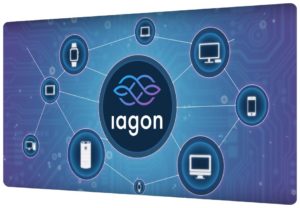 4. Smart Global Computational Grid
4. Smart Global Computational Grid
IAGON’s implemented Smart Computing Grid is effectively the logistics layer that handles the complex nature of decentralised computations hosted by a network of computing clusters hosted on both the Cloud and Grid environments. In this context the equivalent analogy of solar power integration to an electrical grid is quite appropriate as it shares common characteristics. For example, it connects multiple solar producers (e.g. Miners) to the user/customer; the grid fulfils the source demand for the required processing; it transfers unused resources to customers in need (i.e. CPU/GPU processing power and storage space) and lastly, it rewards the miners providing processing power and storage space (via Proof-of-Utilitarian) to the grid without requiring efforts when their infrastructure are not used locally.
Systems integration in this context is one of the biggest challenges during the genesis of any cloud based distributed computing platform, yet alone for one that is likely to end up being one of the most complex hybrid combination of blockchain and tangle. The key to optimizing the Smart-Grid is the presence of an advanced and pioneering AI that draws upon a wide range of problem-solving techniques and methods applied in the pursuit of improved decision-making and efficiency, such as simulation, mathematical optimization, queueing theory and other stochastic-process models and Markov decision processes that all together integrate to form the AI-Tracker system.
AI-Tracker is the “brain” behind IAGON ’s Smart-Grid and is simply a complex of dynamic learning systems that continuously analyses past and current data streams that reflect the availability of storage space and processing capacities of miners. The AI-Tracker carries out a number of tasks that include encryption registration of the file slice identities attributes and locations on the blockchain (i.e. a file ledger); optimally allocating encrypted file slices to the miner’s free storage spaces to computational tasks to the miner’s with CPU/GPU idle states, identification of rogue nodes (i.e. clandestinely integrated back doors) that should be blocked and removed from the grid, and finally continuously streamline the grid ’s attributes (e.g. measuring the elapsed execution times to assess its scalability and speedup) to optimize its performance at any time.
IAGON’s AI powered Smart-Grid creates simplicity out of complexity, managing the complex nature of decentralised storage and computational task optimization through operational research. Built with an advanced AI and data driven instruments, indicators and services it is a powerful hybrid of AI and network management.
 5. Platform Architecture
5. Platform Architecture
IAGON’s open-source platform architecture is a layered collective of unique functionality consisting of a Server Layer, Artificial/Intelligence or Machine Learning algorithms, Blockchain Layer and Miner Nodes and Encrypt/Decryption Protocols. These interconnected capabilities are structured to provide a framework able both to offload efficient computation on multiple Miner CPU/GPUs and to handle the execution of the learning algorithms on a computing clusters, hosting in both Cloud and Grid/HPC environments.
When a user uploads a file and processing request to IAGON’s server, the machine learning algorithm sends blocks of the corresponding data randomly over to the miners to process in order to locate matching signatures. These blocks of data are then returned back over the blockchain, validated along with an output which the machine learning algorithm will use to identify a node. In this environment the blocks are distributed evenly to miners by utilizing the Proof-of-Variance (PoV) algorithm and a further crucial feature is that it does not store any of the data within their local system. Because of this implementation, it is guaranteed that the data is processed anonymously with each individual node being effectively unknown to each other except through the machine learning algorithm.
Blockchain is an innovative feature to add to this mix that permits files to be broken down into block form for distribution among the nodes and respective miners. In simple terms the blockchain utilizes the SHA-256 Cryptographic algorithm (a kind of ‘signature’ for the data file) and hashes (i.e. maps) each block with it’s previous to create a link in a chain. When data is received back from an individual node, the output will be matched against the hash of its corresponding block and validated against its header to determine if the output data is valid. This way of processing provides a unique method towards distributed processing as it provides a layer of integrity to the data being processed and to determine if the output has been compromised in any way. In the event that any of the miners have manipulated data the returning block will be rejected and the original block will be sent over to a different node to be reprocessed.
IAGON’s encryption and decryption protocol means that data files (e.g. file size and contents) are provided with secure storage within the internal server and external platforms. Data is encrypted using Hash cryptographic trees, fragmented using sharding techniques, copied for redundancy and distributed among several P2P miner nodes. Additionally, the protocol also provides a conduit for decentralization as any external API enabled platform can simply be integrated to IAGON and utilize its services. Because of the decentralisation functionality a variety of secure SQL/ NoSQL and Big Data (e.g. Massively Parallel Processing and Hadoop) database types, private/public blockchains (e.g. Ethereum, NEM and Hyperledger) can be applied.
Built with an intuitive web desktop, combining all the features expected of a highly parallel and decentralized HPC network, but also incorporating an incredible array of machine learning algorithms, data driven instruments, indicators and services it is a powerful and customisable architecture for any computational requirement.
 5.1.1. Machine Learning
5.1.1. Machine Learning
IAGON’s AI, is constantly learning and assimilating the limitless supply of available performance grid metrics available from the Smart Computing Grid in order to create a highly organised real-time data structure which can be optimised. To achieve real-time decision making and optimization (i.e. optimal control), Reinforcement Learning together with Markov Decision Processes have also been adopted as a part of the multi-model approach as it particularly well suited for dynamic and distributed computational environments.
Reinforcement differs from standard supervised learning in that correct input and output pairs need not be presented, and sub-optimal actions need not be corrected. Instead the focus is on performance, which involves finding a balance between the exploration (of new data structures) and exploitation (of current knowledge). The exploration vs. exploitation trade-off using Markov Decision Processing (based on probability theory) tries to determine a set of optimization actions that maximise performance and future rewards. In simple terms this semi-supervised learning doesn’t need to be solely trained on datasets that include labels added by a machine learning engineer or data scientist that guide the algorithm to understand which features are important to the problem at hand. What’s more, the combination of labeled and unlabeled data is beneficial as the training process actually tends to improve the accuracy (removing imposed human bias) of the final model while reducing the time and computational cost spent building it.
Technically, IAGON’s leaning component provides a set of neural network models alongside the possibility to create deep architectures and configurable hyper-parameters. This approach enables the user to focus on the specifics of the computational problem, tuning the neural networks (outside pre-set) according to the requirements, while the framework takes care of the rest. The framework has some particularly innovative features that can take into account the pre-processing of unstructured Big Data and at the same time has the capability to recognize and classify the data it has been previously trained. Both the training, the classification and the pre-processing operations are executed in a distributed fashion using the Map-Reduce paradigm (i.e. filtering and sorting) that naturally fits with a distributed storage layer decoupling the data partitioning over a set of distributed nodes from the processing logic. Finally, the system can also leverage the underlying CPU/GPUs by supporting nodes with multiple graphics cards and automatically offloading and balancing the computation on these devices.
Although still in its infancy, IAGON’s machine learning will be a game changer in the optimal control of distributed storage and computational processing that will provide a comprehensive benchmark of the abilities of the developed framework, measuring the elapsed execution times to assess its scalability and speedup.
PROS: AI Multi-Model Approach to Grid Optimization.
CONS: None.
 5.1.2. Blockchain Protocol and Tangle
5.1.2. Blockchain Protocol and Tangle
IAGON’s advanced Blockchain Layer is a hybrid of Blockchain and Tangle Technologies (optimized through AI) configured to serve not only as a secure platform to integrate with existing blockchains but also utilize its data mining feature to process data.
As a Blockchain interface layer it allows data to be securely stored within open-source, public and even private blockchains used by enterprises (e.g. Hyperledger, ETH and NEM), and vice versa. Using machine learning algorithms and encryption/decryption protocols, IAGON is able to provide a secure method in storing data across platforms. Additionally, the strategic integration of Tangle assists in resolving some of the issues associated with the implementation of the Blockchain technology for a large scale of operations, including the difficulties to scale the blockchain, to achieve consensus on the validity of blocks when the new blocks continuously arrive. By applying the Tangle technology, IAGON can offer an alternative solution for organizations with Big Data repositories that can support large scales of processing and storage management tasks.
IAGON also leverages Blockchain technology to maximum effect by maintaining honesty of nodes across Smart Grid and corresponding distributed data mining algorithm. By design, Blockchain is inherently resistant to modification of the data. It is effectively an open, distributed ledger that can record transactions between two parties efficiently and in a verifiable manner. In this context the employed SHA256 algorithm of previous blocks (according to the analogy) maintains a chain link to its historical state (in this case data). This allows IAGON to manage both a reward system to incentivize miners on its platform to process data honestly, but at the same time guard against deliberate manipulation of the data output.
Using Blockchain, IAGON’s machine learning algorithm can quickly identify whether data output mined from a block is actually a valid part of the block. This can be easily achieved within the framework of a simple Blockchain by hashing the inputs with the hash of the previous block. IAGON’s ecosystem creates multiple back-up copies of the Genesis block (i.e. first block of blockchain) with respect to the data internally within the private blockchain. The application of a Blockchain layer is a unique and particularly well-suited approach towards sharing data across a decentralized network. In this framework, data can be stored, processed and validated by a network of nodes, or it can be stored and validated within an internal facility where the processing is outsourced to a decentralized network of nodes. Additionally, Blockchain allows consistency to be maintained throughout the entire data structure.
The adoption of hybrid Blockchain and Tangle technology that combines data mining features to process data and encryption is a perfect synergy and delivery system that has the capacity to support large scales of processing through the Miner Application and Distributed Storage Management tasks.
PROS: Blockchain Convergence, Tangle Technology and Miner Application/Distributed Storage
CONS: IOTA’s Tangle Technology is still in beta stage.
 5.1.3. Data Mining
5.1.3. Data Mining
IAGON takes a very different approach towards Data Mining (i.e. finding anomalies, patterns and correlations within large data-sets) using Artificial Intelligence and Blockchain unlike the traditional cryptocurrency paradigm. It essentially utilizes a private Blockchain with public network protocols over API networks which dramatically improves consensus and mining efficiency. In this strategy the miner does not need to store any of the data in order to mine, leaving it’s sole responsibility to honestly process the data and send the output back to IAGON’s Machine Learning algorithm for analysis.
Data mining on IAGON ’s platform by design does not have the need to perform complex algorithms to solve an equation. Instead, it uses the existing decentralized computing network (via the grid) to distribute load and increase speed for simple data processing tasks. Block tasks are distributed to miners using the Proof of Variance method to minimize variance in block creation time. Additionally, Proof of Variance allows new miners to improve their computational power over time and existing miners with greater computational power and connection speed to earn rewards proportional to their contributions. Since miners don’t require storage for data processing, once the data has been verified and validated belonging to the specific block, the miner is considered to have successfully mined the block. In terms of the block rewards system, the standard model applies where miner receives rewards based on the number of data points it mines, and if no data is found within the block the miner does not receive any rewards. This provides an incentive to miners to complete the entire block task and further to increase their mining efficiency. At the same the incentive mechanism also discourages miners from just mining a block until the first data output is achieved because of the speed limitations associated with network connections will prove to be uneconomical, as such miners will be encouraged for their own benefit to completely mine the entire block to find all possible data points that matches the data input.
Block tasks on the platform are generated at a fixed rate and are entirely confidential meaning there is no communication between miner’s clients. Only the uploader can associate each of the blocks with the original file and retrieve it. Mining essentially begins with IAGON’s multi-threaded server connecting the miners to platform to distribute and receive results. Blocks are then sent via HTTP-based protocols so that clients inside firewalls and can maintain unrestricted access and connection. The MVP Miner client that resides on each miner unit (operating as either a background process or a GUI application) manages such multithread functions as communication, block processing and storage and finally GUI interactions. Under this environment blocks are processed purely in memory (i.e. RAM) or diskspace provided by the miner’s unit and cleared once the block has been completed freeing up resources for the next task. In the event a miner is disconnect, goes offline or does not complete computation on its block, a redundancy mechanism is activated and the block is resent to other nodes in the network.
IAGON’s Data Mining Layer and featured MVP Miner client with multithread functionality and in-built redundancy for distributed computing storage and processing has been designed ground up to optimize client-to-miner services with a well-planned Block Mining/Rewards economy that caters for both individual and enterprise requirements.
PROS: Mining Public/Private Blockchain over API Networks, Block Rewards, MVP Client and Processing redundancy.
CONS: Platform scalability and efficiency entirely dependent on participating miners on grid.
5.1.4. Encryption/Decryption Protocol
IAGON utilizes advanced Encryption/Decryption methodologies for secure internal data storage and distribution of data blocks to miner nodes. Data storage can accommodate a variety of management systems which include SQL, NoSQL, private Blockchains and other 3rd party storage providers that all benefit from the use AES-256 to encrypt and decrypt data. AES -256 is the encryption standard recommended by the NIST uses a symmetric key algorithm and has been thoroughly vetted by security experts from around the world to ensure the highest levels of protection.
Secure Lake Technology is a unique innovation specific to the platform which targets Big Data and the recent adoption of Data Lake architectures based on NoSQL DB implementations (e.g. MongoDB, HBase and Cassandra) as a standard. The technology is cleverly based on Blockchain’s unbreakable encryption technology, file slicing and storage of small, anonymous and strongly encrypted slices of the original files ensures the complete protection of data file type and contents (e.g. Images, Numerical and Scientific Data Formats) and databases of any size and further ensures the rapid retrieval and update of any stored file. Except from the user who securely uploads a file and has the password (i.e. encryption/decryption key), no one can read the contents of the small file slices, encrypt, delete, change, retrieve them, identify their source or even associate them with other file slices that are generated from the original, uploaded file. IAGON ’s technology ensures that even in the event of an information systems breach, the data and file integrity cannot be accessed, deleted or modified in any way.
In terms of the file encryption strategy adopted for distributed block mining tasks it can considered as a sophisticated three-layered process and can be comparable to a puzzle analogy. In the first layer where the AI initially upon receipt of the file employs an AES-256 encryption to “blacken” out the file prevent identification. What follows next is a novel approach where the “blackened” puzzle undergoes a “sharding” process where it is broken down into anonymous pieces (i.e. data blocks) mixed randomly so that no individual (other than original uploader’s key) can associate the origin of the file. The final step in the process utilizes the blockchain and associated SHA-256 cryptographic hash for the final encryption and to further distribute these shards to the respective miners. Because data is encrypted at all steps, the risk of interception, file association and tampering is largely eliminated. For this reason, there is no option available on the physical platform to perform data recovery should the client holder loose either password or encryption key. However, an external solution is accessible for those users that adopt the new Gnosis wallet release, which allows for a new private key to be generated that is dependent upon satisfying a full KYC check (via live video feed), and a security deposit which assures ownership of the account.
With IAGON’s Encryption/Decryption Protocol, privacy isn’t just a promise, it is mathematically ensured. It’s guiding principle that privacy and security of client data are universal values which are borderless throughout the decentralised network.
PROS: Secure Lake Technology and Multi-layer Encryption.
CONS: Zero recovery options internally in absence of password or encryption key.
 6. Token Smart Contract
6. Token Smart Contract
IAGON has adopted the IAG token identification and development through ERC20 standards. It has been purposely integrated with the ETH Network to ensure that all interactions, exchanges, smart contracts and wallet storage are seamless, secure, swift and straightforward, across all token platforms. This standard is well established, stable, strong, and has been widely adopted throughout the blockchain community.
The widespread adoption of the ERC20 framework across multiple token platforms also means that any tokens built to the ERC20 standard (e.g. contract details) can be easily listed across both centralised and decentralize exchanges with nothing more than the token contract address. The same applies to the listing of any and all ERC20 compliant tokens in one wallet, providing a centralized point of access for all your cryptocurrencies. Additionally, given the increased adoption of the ERC20 standard throughout the blockchain community and the growing congestion, the IAGON development team have laid the foundation for the adoption of the ERC223 standard to tackle future challenges.
PROS: ERC20 Contract/ETH Network Adaptation and ERC223 development.
CONS: ERC20 network growing congestion.
7. Token Economy and Capital Distribution
The launch of IAGON token will serve a number of business development purposes, most importantly however is that will assist in raising the capital required to begin final testing and deployment of platform and associated Smart Computing Grid to the market. As such the IAGON (IAG) can be considered as a utility token enabling access for participants from consumers (both individuals and companies) in need of processing capabilities, and producers offering storage resources and processing capabilities.
IAGON’s token-based economy is based on computer, server and data centre owners who join the storage and processing power grids. In return for sharing the capabilities of their machine, they will be given IAG tokens (tradeable back to fiat), alternatively any party desiring to utilize their capabilities will purchase IAG tokens for distribution to the respective parties that provide their services on the grid. Contributors to the grid can publish their capabilities and offer their service on the basis of their experience (i.e performance metrics), available resources, storage space and bidding on price. Advanced machine learning and AI algorithms will assist in managing price recommendations to parties involved and classifying them according to their price levels and in addition to assuring continuity of services and access to all files. As recognition grows of the benefits that IAGON’s platform provides to the global community in terms of storing files and processing them, the demand will increase and so will be the demand for the token.
In order to further develop and promote the IAGON platform, a token generation event (TGE) offered for sale (20% Pre-Sale + 50% Public Crowd sale) amounting to 490 million IAG tokens out of a 700 million total supply. The remaining 30% (i.e. 210 million) of the TGE will be allocated with 10% – Research and Development, 10% – Team, and finally 10% – Advisors and Bounty Hunters Marketing.
Team tokens are allocated first as performance related tokens for existing team members, with the remaining distributed to co-founders: Dr. Navjit Dhaliwal (65%), Dr. Elad Harison (25%), Dr. Claudio Lima (10%). A further condition of this distribution is that 70% of the team tokens are locked until mainnet launch (Q1 2019), and the CEO’s (Dr. Navjit Dhaliwal) tokens are locked in following schedule: 30% for 1 year and 70% for 2 years.
The token itself is conveniently mineable, and any unsold tokens will be distributed to token holders in terms of percentage held thereby stimulating token value and demand through access to the Smart Grid contained within the platform.
In summary, the token economy and generation event present a clear and well-defined distribution strategy that instils market confidence and future growth of the platform with a distinct emphasis on scalability and application of the core technology.
PROS: IAG utility style token, well-structured economy and TGE.
CONS: Rewards System can potentially get centralised by large miner node operations.
8. Road Map
IAGON’s Technology Development Roadmap provides a highly detailed step-by-step strategy that itself warrants a separate treatment from the white-paper.
The infographic layout creates simplicity out of the project’s complexity beginning with an overview of the Platform Cycle demonstrating such desired functionality as File uploading, Encryption, Sharding, Miner Transfer Protocol and Secure Data Access with Decentralised Storage. What follows is a systematic break-down of various phases (quarter-yearly) providing a synopsis of the intended objective, associated technology modules and their connectivity with indicated completion status (denoted by shaded regions). Additionally, in further support of project milestones a web-based status indication accurately reflects the on-going development within the allocated timeline. It is evident that the technical undertaking is quite ambitious given the integrated technologies under development and further that some phases contain key modules that are being developed in parallel (which is a good design philosophy) but can potentially impact the overall platform delivery.
Clearly, the technology development road map with the benefit of the Alexandria Protocol (beta release) and recently the updated MVP Miner Application/Distributed Storage demonstrates continued progress and commitment towards project deliverable and timelines.
PROS: Detailed step-by-step synopsis of development strategy.
CONS: Requires graduated training of Alexandria Protocol on release, and Timeline for deliverables.
9. ICO Token Sale
IAGON’s ICO token sale which was originally launched as a Dragonchain Incubator is now handled internally and will be rolled-out in two phases in order to reach a total investment capital, or hardcap of USD 77,000,000. The Pre-sale event strategically provides a clear token bonus schedule for amounts in excess of >0.1ETH, which serves to encourage both early participation and a convenient minimum investment. Dragonchain pre-sale participants have the added option to buy according to their DSS score, which will be locked according to when the previous contribution was made and pegged ETH price. The follow-up Crowdsale (i.e main token sale) will continue with a set price of USD 0.12 per IAG token. Payment system options conveniently include fiat (e.g. USD & EURO) with KYC integration, relevant transaction banking fees dependent upon country and an established range of cryptocurrency. The IAG ICO token sale platform provides flexibility with a variety of options, bonus arrangements and a simplified approach to participation.
Token Price in Stages1:
Level 1: 1 IAG Token sold at $0.06 (> 25 ETH)
Level 2: 1 IAG Token sold at $0.07 (> 10 ETH)
Level 3: 1 IAG Token sold at $0.08 (> 5 ETH)
Level 4: 1 IAT Token sold at $0.09 (> 0.1 ETH)
1 The Pre-sale ETH price pegged at a minimum of $1,000 USD
PROS: ICO token sale breakdown, token bonus schedule and payment system.
CONS: Fiat payment options governed by country regulations.
10. White Paper
IAGONs’s White-Paper demonstrates a technically proficient and comprehensive overview of the project including integrated technologies that adopts a traditional top-down approach of content that is further enhanced with infographics creating simplicity out of complexity.
The introductory content presents an overview for IAGON’s vision of supercomputing capabilities powered by Artificial Intelligence and Blockchain Technology, its business model and structure in an intelligent and coherent fashion. Intermediate sections briefly outline IAGON’s central concepts of Artificial Intelligence and Big Data prior to addressing various integrated technologies that leverage the Artificial Intelligence (i.e. Alexandria Protocol) from computational processes, multiple blockchain support (i.e. Tangle Technology), encryption (i.e. Secure-lake Technology) and the finally the Smart Computational Grid in a semi-technical level.
Advanced topics covering the architecture of IAGON’s open-source platform, core specific functionality and its overall integration such as Machine Learning, Data Mining, Blockchain, Encryption/Decryption Protocols and finally Mining Algorithm (i.e. mathematical corollary) are detailed in a similar anatomical fashion with an increased technical approach. The content is also purposeful structured (and benefits) from a UI/UX standpoint further highlighting external functional elements such as mining nodes, access to remote databases and private/public blockchain. This graduated technical description is well delivered to ensure maximum understanding and caters for a wide audience of differing technical and business expertise.
Finally, the content is rounded-off with more business style and operational details briefly outlining the Token Operations, Terms and Conditions / Legal Disclaimer and IAGON’s executive team summary are fully disclosed in a thorough and open manner.
PROS: Semi- to full-technical overview covering all aspects of the IAGON Platform.
CONS: Some repetitive content, and Technical details can be a little overwhelming.
11. Communication and Support
IAGON demonstrates a well planned and executed strategy towards community knowledge and awareness with distributed efforts (reflecting the design philosophy) covering both the individual private investor but also the corporate and government community. Marketing has delivered a solid strategic awareness effort through mass media gaining traction and acceptance for decentralised cloud based computational and storage services leading to a number of high profile corporate adopters and partnerships within the global crypto and ICT community respectively.
IAGON’s website is well structured and built with an exceedingly intuitive design that provides an informative overview of the entire platform. The site utilizes a clutter free combination of both textual and convenient infographics detailing all aspects of the platform that include for example IAGON’s Vision, Decentralized and Secure Cloud Platform functionality, Road-map, Crowd funding efforts leading to the Development Team biographies. In addition, the web-content is further complimented with downloadable documentation that provides either specific treatments of IAGON’s Business Model/Plan, developed Artificial Intelligence (i.e. Alexandria Protocol), or a noteworthy Competition Analysis of the decentralised services within community. It is a perfect example of an intuitive design philosophy creating simplicity out of complexity without compromising on technical content.
In terms of social media presence and outreach, the team is consistently active, discussing all matter of topics and updating regularly via various popular social networking such as Facebook, Twitter, Telegram, Reddit, Medium, Steemit, Facebook, BitcoinTalk and YouTube. Additionally, participation on GitHub’s control system and code repository enables the development team to vet revisions of code that can be discussed publicly, so a mass of community experts can contribute knowledge and collaborate to advance the project forward.
IAGON’s approach towards effective communication, support transparency of the platform throughout the community is model of professionalism and dedication, showcasing the very best of human endeavour towards a vision that is second to none.
PROS: Extensive online/offline communication and support infrastructure
CONS: None.
12. Conclusion
IAGON’s vision for supercomputing capabilities powered by Artificial Intelligence and Blockchain Technology is a masterpiece of technical complexity, elegance and innovation that makes affordable decentralised storage and computing services accessible to both the individual and enterprise.
The project achievements to date have already demonstrated promising results with in live platform tests using the Alexandria Protocol and integrated technologies such as the Smart Computational Grid (and functionalities synced across smart devices), Blockchain/Tangle integration and Encryption/Decryption Protocols that will undoubtedly challenge the establishment. It clear that IAGON’s platform development is at various stages of completion and coupled with the technical enormity of system integration within the given time-line may yet still prove to be challenging. However, the fundamental components of the technology, resources and knowledge able to meet these challenges are present and active on levels.
IAGON is the leader in a new generation of decentralized AI Blockchain-enabled smart computing grid technology that is transformative (as the discovery of electricity) which will grow and evolve unlocking a tidal wave of innovation. The immense potential fuelling the accelerated development of this technology, combined with intense business interest from a wide range of industries, will act as a perfect stimulant for more and more enterprises to participate in this platform. I envision this platform will soon directly or indirectly influence every facet of storage and computational enterprise.






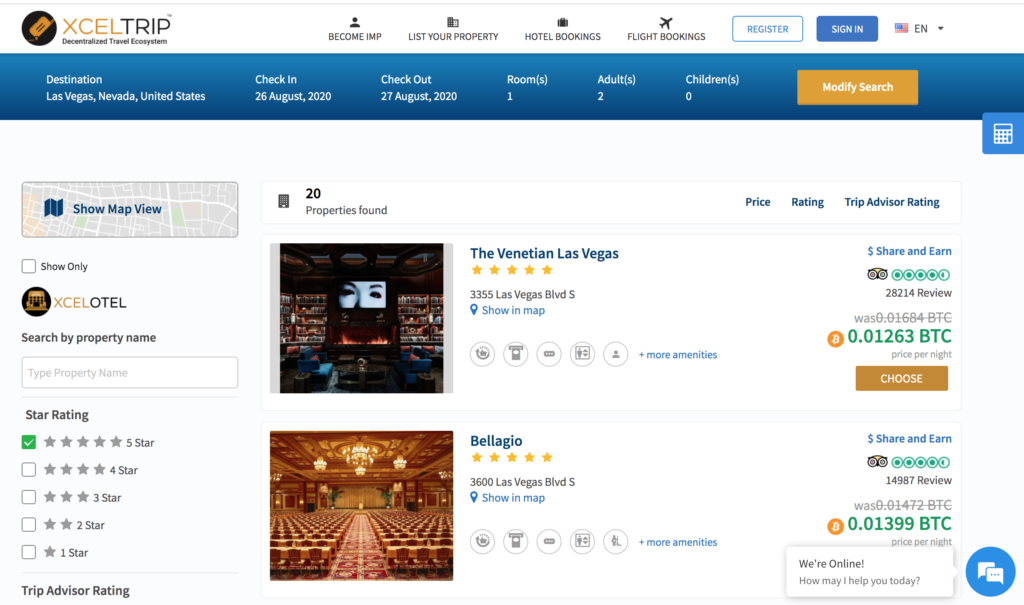
 XcelToken:– www.xceltoken.com / Blockchain Utility Token. Can be used at XcelTrip travel booking platform for hotels and flights booking worldwide, XcelPay crypto wallet, Merchant POS, Payment Gateway, CoinGeo crypto exchange and Bitnaire social networking apps.
XcelToken:– www.xceltoken.com / Blockchain Utility Token. Can be used at XcelTrip travel booking platform for hotels and flights booking worldwide, XcelPay crypto wallet, Merchant POS, Payment Gateway, CoinGeo crypto exchange and Bitnaire social networking apps.
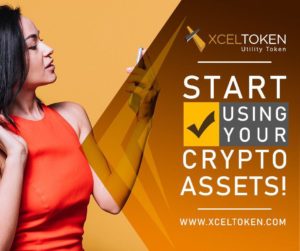 XcelToken: A Blockchain Utility Token. Cheaper for Travelers, More Revenue for Providers. XcelToken is digital general-purpose utility token based on the ERC20 Ethereum protocol which launched its token from 20th March, 2019.It helps hotels, restaurants and marketing partners earn while participating, while travelers enjoy the benefits of a leaner eco-system.
XcelToken: A Blockchain Utility Token. Cheaper for Travelers, More Revenue for Providers. XcelToken is digital general-purpose utility token based on the ERC20 Ethereum protocol which launched its token from 20th March, 2019.It helps hotels, restaurants and marketing partners earn while participating, while travelers enjoy the benefits of a leaner eco-system.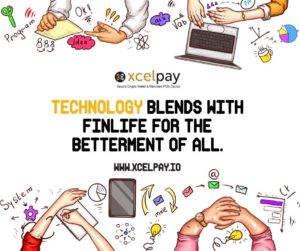 “XCELPAY” is a Crypto Merchant Payment Solution,integrated into a easy to use, secure smart tablet for receiving and sending payments in crypto on the Go!XcelPay Merchant POS Device will help drive crypto usage around the world.
“XCELPAY” is a Crypto Merchant Payment Solution,integrated into a easy to use, secure smart tablet for receiving and sending payments in crypto on the Go!XcelPay Merchant POS Device will help drive crypto usage around the world.